|
|
Period:
Yugoslav Wars
Region:
West Slavonia
The Croatian crime Flash in Slavonia 1995
The criminal action "Flash" is the miltary campaign, which led to expulsion of Serbs from the Western Slavonia region (which was part of the Republic of Srpska Krajina), conducted by the Croatian military, paramilitary and police forces on the 1st and 2nd May 1995 under the leadership of Franjo Tudjman, with the intention of ethnic cleansing of Western Slavonia. At the time of the attack, the area of Western Slavonia was under the protection of the UN forces.
In just 36 hours more than 15,000 Serbs were expelled with 283 of them being killed or disappeared, including 57 women and nine children. The Army of the FR Yugoslavia and the Army of the Republic Srpska did not respond, nor did they try to interfere while the operation "Flash" lasted.
The Hague Tribunal haven't processed the genocidal action "Flash" but during the trial to Croatian generals Ante Gotovina and Mladen Markač in 2006-2012, it was mentioned that there were crimes, but Gotovina and Markać were not held responsible, at least according to the appeal judgment of 16.11.2012.
This is the third attack of Croatian forces in West Slavonia and Bilogora region, after the criminal operations "Otkos" and "Orkan" during 1991-1992.
BACKGROUND
With the disintegration of Yugoslavia, more than two million Serbs living in the area west of the Drina River found themselves beyond the borders of the Republic of Serbia. The disintegration of Yugoslavia in mid-1991 brought war and conflict, persecution and suffering, as Croatian separatists wanted beside independence to get an ethnically pure Croatian state.This would led to realization of the milennial dream of Croats to get an independent Croatian state.
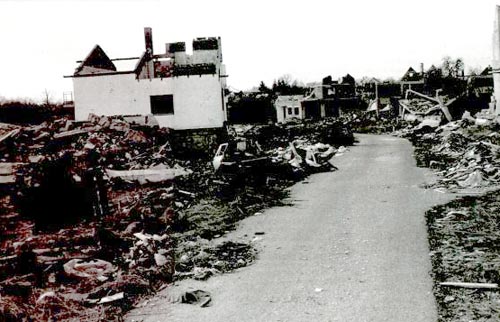
Village Divoselo was total destroyed
In the autumn of 1990, the Goverment of SR Croatia illegally imported a large quantity of weapons, and in the winter they changed the Constitution declaring Serbs as a national minority. They erased the name "socialist" and a five-pointed chessboard became a symbol of Croatia. This led to the worsening of relations and tensions between Serbs and Croats. In the spring of 1991, Croatian police began raids in Serbian places and Serbs responded by raising barricades.
Federal Yugoslav Army - JNA served as a buffer zone until mid-summer 1991 and then it was attacked by Croatian paramilitaries. Members of Ustasha (Croatian fasistic forces) and their descendants began to return to Croatia who emigrated after 1945 (Australia, USA, Canada, Spain, Germany, Argentina, Paraguay...)
Thus began the war that has lasted for four years. During the war the Republic of Srpska Krajina was created, which included Northern Dalmatia, Lika, Kordun, Banija, Western Slavonia and Eastern Slavonia, Baranja and Western Srem.
In April 1992, in the central Yugoslav Republic of Bosnia and Herzegovina, tensions began to intensify and a bloody war started between the three nations, which has lasted for three years. This war led to creation of the Republic of Srpska which was needed by Serbs to avoid genocide they suffered during World War II.
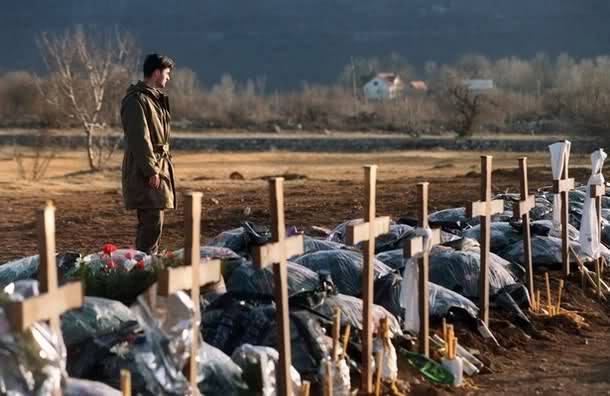
Serbian cementery in Serbian Krajina
Muslim and Croatian army units in Bosnia and Herzegovina committed lots of criminal actions, which led to the ethnic cleansing of the Serbian population in Sarajevo, Srebrenica, Bihac, Mostar, Gorazde, Tuzla, Orasje, Capljina, Zenica, Visoko, Odzak, Duvno, Livno, Bugojno. Concentration camps were established for the torture of Serbs (Dretelj, Duvno, Celebici, Sarajevo, etc.).
The Croatian Army and police during the war in Croatia (1991-1995), conducted series of criminal actions such as: "Miljevački plato", "Maslenica", "Medak Pocket". The ethnic cleansing of Serbs was conducted in urban areas such as: Sisak, Gospic, Zadar, Osijek, Vukovar, Karlovac, Zagreb, Split, Dubrovnik and others.
PREPARATION OF ATTACK
This criminal action was planned by the political and military leadership of Croatia.
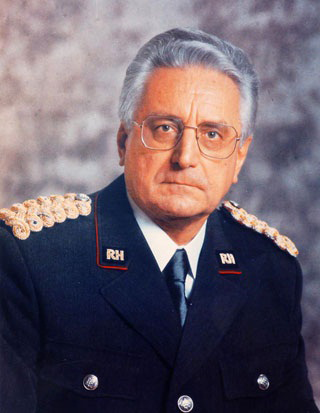 
States and military leaders: Tudjman and Bobetko
Those are:
-
Franjo Tudjman, Croatian President
-
Gojko Susak, the Croatian Defense Minister
-
Janko Bobetko, Chief of the General Staff of the Croatian Army,
-
Petar Historian, Lieutenant General of the Croatian Army,
-
Imre Agotić, Lieutenant General of the Croatian Army,
-
Mladen Markač, Croatian police major general,
-
Džanko Luka, Major General of the Croatian Army,
They are still free, glorified as Croatian national heroes.
THE AGGRESSION
The operation "Flash" started in the morning at 5am on 1 May, 1995, with the artillery attacks on Serbian positions Pakrac to Jasenovac on the west side of the village Donji Bogićevac over Medara to Pakrac at the east. Around 16,000 members of the Croatian forces from several directions attacked less than 4,000 members of the West Slavonia Corp of the former Serbian Krajina Army on 1 May at 5.30 pm while people were still sleeping.
Around 6:00pm, the Croatian Armored Brigade entered the "buffer" zone, which in the region of Pakrac was supposed to be protected by the members of the Jordanian UN forces.
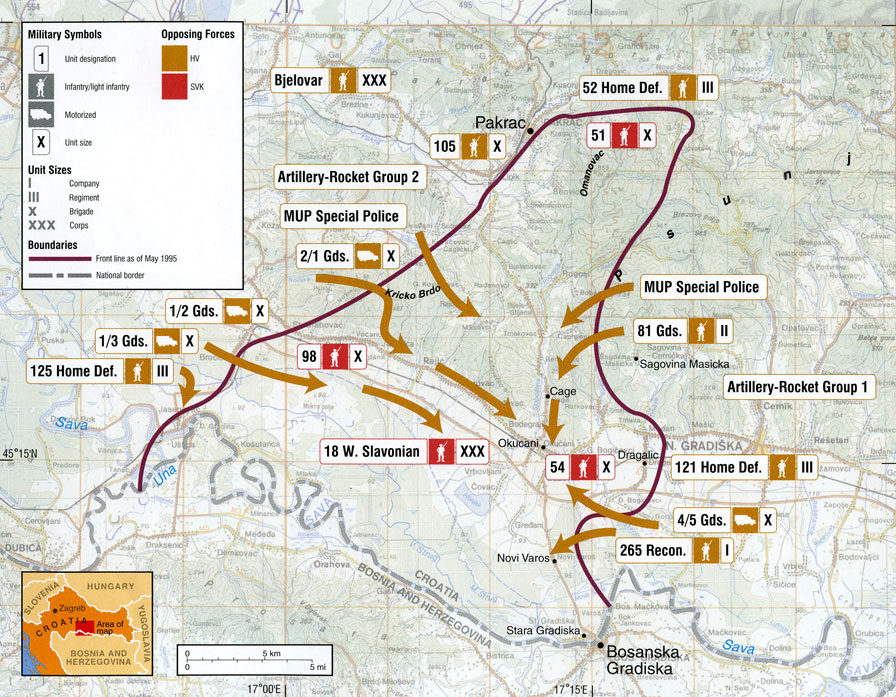
With the sudden attack, the towns of Pakrac and Okučani were isolated and 6,000 Serbs found themselves surrounded with the Croatian forces which means that the number of attackers was higher than the population in this area, and the ratio of soldiers was four against one.
The UNPROFOR Command confirmed it had received notice about the beginning of the agression on Western Slavonia, but it didn't include rationale for such an act. After the start of the operation, the Jordanian (UN forces) withdrew to their bases from which they watched the suffering of people whom they were obliged to protect.
The Croatian Interior Ministry stated that the attack on the Republic of Srpska Krajina was a "police operation" which "aims to ensure the safety of the passengers on the highway Zagreb-Lipovac," adding that the operation was of "local character".
In the refugee convoy of Serbs, who were trying to escape from the Croatian army and police on their way to the Republic of Srpska, 283 people were killed or missing, including 57 women and nine children. Serbian refugee camp were attacked with air bombs and cannon shells.
Around 1,500 members of the Army of Srpska Krajina were captured, most of them by fraud, with the help of the UN Protection Force. After the capture, Croatian courts convicted a number of Serbs for all kinds of war crimes and 18 men still serve long prison sentences in the notorious prison Lepoglava.
TRIAL AND JUDGMENT
On 15 April 2011, The Hague Tribunal sentenced Croatian army generals Ante Gotovina to 24 and Mladen Markač to 18 years to prison. They were convicted for participation in a joint criminal enterprise led by Franjo Tudjman, whose goal was to forcibly and permanently remove the Serb population from the Krajina region during and after the operation "Storm" and "Flash".
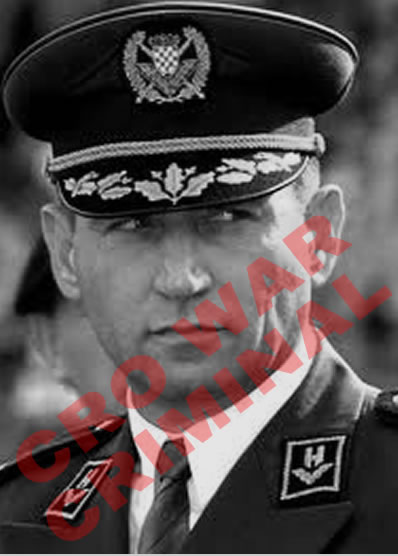
Ante Gotovina is croatian war crminial, not hero
The Hague Tribunal found them guilty of the crimes of persecution, deportation, plunder, destruction, murder, inhumane acts and cruel treatment, and acquitted them of responsibility for the forcible transfer of population.
In response to the operation "Flash" Krajina Serbs bombed Zagreb on 2 and 3 May 1995 , where six people were killed and about 150 wounded. Because of the bombing of Zagreb after the "Flash", the Hague Tribunal brought judgment which sentenced the president of the Republic of Srpska Krajina Milan Martić to 35 years in prison.
The Hague Tribunal is well informed about this crime, but it still hasn't opened investigation. Ignoring this crime, on 25 July 1995, the same court brought the indictment against Milan Martić, former president of the RSK for "failing to abide the rules and customs of war, when he issued instructions to military forces of the RSK to granate Zagreb in retaliation for "the Flash"", which resulted in killing seven civilians.
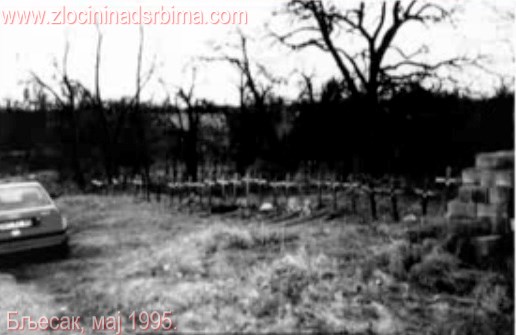
"When you realized that the people of Croatia didn't want you there, why didn't you leave Croatia and move to Serbia? Instead, you have made trouble to yourself and Croats. "
(ICTY judge Dzastis Bakone Moloto to the witness at the trial of Milan Martić)
CONSEQUENCES
The Serb population, after the expulsion from Western Slavonia, mostly scattered around the world (The Republic of Serbia, Australia, Canada, USA, Germany ...), far from their homeland.
The small number of people have returned, mostly elderly. The Documentation and Information Center "Veritas" notes that in the period 1996-2006 about 1,300 displaced Serbs returned to their homes in Western Slavonia.
Serbian returnees are not welcome in Croatia. They constantly receive threats and their assets are being usurped or destroyed.
In Croatia, 1st May is celebrated as a holiday, while in Serbia people go to the memorial service at the church of St. Mark in Belgrade, organized by the Association of families of missing persons from the territory of the former Yugoslavia "Suza"...

Serbian victims of the criminal operation "Flash" haven't received memorial place or monument in the Republic of Serbia or the Republic of Srpska (B&H) so far.
Tags:
Please, vote for this article:
Visited: 3251 point
Number of votes: 4
|